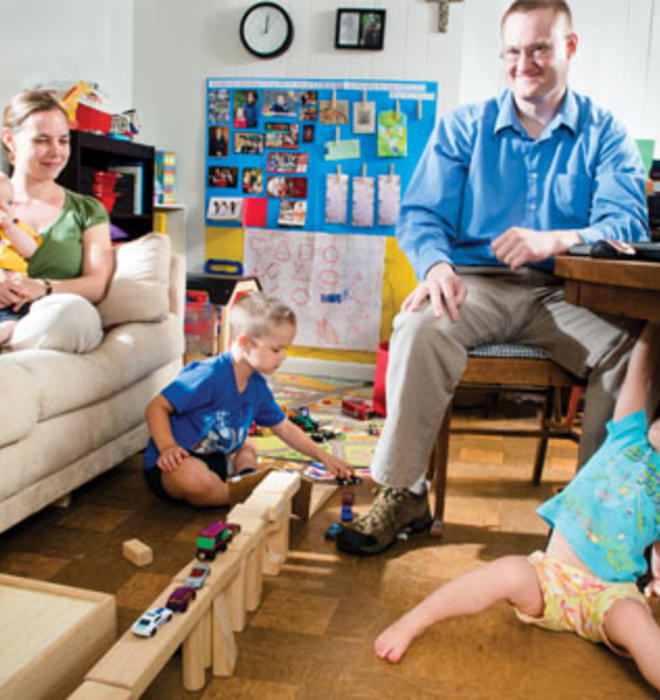
A wonderful life
For nearly seven decades, Butler Tract has formed a happy domestic backdrop for students — not bad for ‘temporary housing’
“I love my clothesline!” gushes Julie Johnson, a five-year resident of Halsey Street in Butler Tract and the wife of a graduate student. “Where I lived before, clotheslines were against the code.” In fact, Johnson loves everything about Butler, Princeton’s quirky old housing complex for grad students — the dandelioned lawns, the community garden, the cadre of intellectuals from all over the world: “I’m really sad they are going to tear it down.”
Yes, this will be the last summer for the Butler apartments. Wrecking crews finally will arrive in summer 2014 to demolish the units, after the new Lakeside graduate complex is open on Lake Carnegie. (At the Butler site, the University intended to build new homes for faculty and staff, but the recession put these plans on hold.) Demolition will drop the curtain on a long, colorful era; recently an elderly widow showed up on Halsey Street, looking for the home where she had lived as a newlywed in the 1940s. “It was so fascinating to talk to her,” says Johnson. “Only I’m glad it wasn’t my unit she wanted to see!”
No wonder — Johnson shares the two-bedroom space with her husband, piles of books on English literature, and children ages 5, 2, and infant. Butler apartments come in two sizes — small (670 square feet) and smaller (454 square feet); so crowded are they that Dan Johnson GS has his computer on a wheeled cart so he can set up an office wherever he can find an inch. Such is life in Butler, where the little hardships seem to brew the happiest memories.
HALSEY STREET is named for a legendary World War II admiral, William Frederick Halsey Jr. Eisenhower Street lies one block over. These names are fitting: The Butler houses originally were U.S. Army barracks, hauled to Princeton after the war as emergency overflow for married students.
Every college faced a housing crunch once the G.I. Bill passed Congress in 1944, funding higher education for millions of ex-soldiers. To relieve the strain — and to accommodate a doubling in graduate-student enrollment from 250 to 500 — the University built Butler on Devereux Polo Field, an emblem of tweedy Princeton sacrificed to the cause of mass education. As a lad, John McPhee ’53, now a renowned writer and Princeton professor, watched construction of Butler, bidding goodbye to “polo — yes, the whole chukker, students in jodhpurs, the horse latitudes.”
Veterans’ Housing Project NJV-28205 of the Federal Public Housing Authority — aka Butler — marked the first flirtation between Nassau Hall and Uncle Sam in the matter of campus development. The University thought it a pretty good deal until its insurance company raised concerns about fire breaking out in this warren of pine-board shanties: The administration was obliged to widen the space between the houses, which drove its costs to a stiff $160,000.
The first eager occupants moved in at Christmastime 1946, as theatergoers flocked to see Jimmy Stewart ’32 in It’s A Wonderful Life. Early residents of the 252 Butler units included married graduate and undergraduate students in about equal numbers, with a few faculty and staff. (By the late 1960s, all residents were graduate students. This remains true today — but residents no longer have to be married.) Ex-soldiers felt right at home. For Paul Cowie ’46, Butler seemed quite luxurious compared to his previous residence, a Nazi prison camp.
One thing was certain: Butler was temporary. Federal regulations required that it be demolished two years after the president declared an “end to the national emergency.” Even after the government transferred title to the University in 1948, the residents all assumed that they were the very last Butlerites. “It was old and run-down in 1960 when I got there,” recalls Joe Trahern *63, “and demolition seemed imminent.”
By that time, Butler was regarded as a model of how not to build graduate housing. President Robert F. Goheen ’40 *48 called for new high-rises surrounded by open space where graduate students’ children could frolic, “rather than structures that eat up the ground like regimented barracks.” Multistory Lawrence Apartments opened in 1967 near the golf course, offering a gleaming alternative to Butler.
But Butler lingered on, playing a key role in housing ever-growing graduate enrollments as higher education boomed. “I’ll believe ‘razed’ when I see it,” says Richard Snedeker ’51 *61, who lived in the enclave six decades ago. “I always love running into old Princeton Ph.D.s who tell me how it was in the old, hard times,” says Vera Keller *08. “You know, ‘When I went to grad school, we had to live in barracks.’ And I respond, ‘Yeah, I lived in those, too ... but they were 30 years older!’ ”
Although Butler today resembles a time capsule, some things have changed over the years. In the 1980s, the University added 58 units to Butler under new, statewide low-cost housing laws. And the name of the project has morphed. Officially called “The Butler Tract Housing” for the blueblood family who donated this acreage to the University in 1912, it was called “The Harrison Street Project” or “The Barracks” by early residents. By the Kennedy years, it was “The Project.” Today, it is “Butler,” and a new lingo has arisen: Students announce their place of residence by saying, “I have a Butler!”
IN REMINISCENCES shared with PAW, the same pattern repeats, time and again: A fresh-faced couple moves to Tigertown, their sputtering car hauling a wobbly U-Haul filled with books but hardly any furniture. Eyeing the upscale borough, they commence to worry about where they will live: Everything is so expensive! They view the long waiting list for Butler with dismay, counting the days until they can get in. “When a tiny unit in the Project came available in fall 1960,” recalls Gail Ullman, who was married to a grad student, “we leapt out of the Route 1 motel where we were confined” and raced to Butler to start their new life together.
But when Charlie Duke *63 brought his bride home to 221D Halsey St., she took one look at it and burst into tears. At 216B Halsey, Andrea Singer — newly married to Nathaniel Singer ’83 — had the same reaction a couple of decades later.
Things would soon brighten, however. In story after story, residents get busy sprucing up tatty places with paint and curtains and, in the spirit of improvisation, jury-rigging copper tubing to feed kerosene to space heaters. “We solved the problem of an overflowing pan under the icebox by drilling a hole in the floor,” recalls “Petey” Funk s’50 *52 — who need not have fretted that Butler would be torn down before her husband finished his education.
Supporting their penniless student-spouses, early Butler wives found employment as secretaries or schoolteachers, or gave piano lessons. Men seldom were seen during the day, slaving long hours on campus. For newcomers, the barracks environment could be a shock. “At first I thought it was ugly,” Julie Johnson confesses. “I was lonely the first year,” says Darlene Dahle s*80. “There were evenings I would walk the streets around Butler Tract with tears streaming down my cheeks.”
But inevitably, friends were made, some of them for a lifetime; and bonds grew close, partly because, in decades past, there was so little to do in town. In the early 1960s, Butlerites mimeographed a newspaper full of book reviews, recipes, and gripes: Princeton had many mansions but no public tennis courts, no municipal pool ... .
Making up for these shortfalls, Butler units rang with laughter: potlucks, martini parties, crossword-puzzle contests. “We played cards for entertainment,” recalls Charlie Wilkes *65, “carrying the baby to the neighbor’s house in a clothes basket. We were all poor but happy.” Seeking respite from dining-hall food, unmarried grad students regularly descended on Butler for home-cooked dinners.
For many, the quasi-rural life proved delightful. “It was like living in a summer bungalow,” remembers Rich Rotunno *76. “You stepped outside onto a creaky porch, surrounded by grass.” Through the ’50s, farmers regularly delivered produce and eggs. Lake Carnegie was right at hand, perfect for rambles or ice-skating. For a few residents, Butler seemed almost too rustic: skunks under the floorboards, squawking mockingbirds in every lilac, the stench of Walker-Gordon Dairy Farm wafting from across Route 1.
Everybody remembers the leafiness: trumpet vines arching over the fuel drums; pansies flourishing around the foundations all winter, since so much heat was always leaking out. A Christmas tree the Ullmans planted in 1960 beside their front door is today a towering giant. When veteran Lorenz Eitner *52 wanted to celebrate the birth of his baby girl, he brought home a white-pine sprig in his pocket after a stroll by the lake. Decades later, his granddaughter included a photograph of the tree — now a neighborhood landmark — in her successful Princeton application.
“My fondest memory is of the communal vegetable garden,” says Sally Van Siclen *87. “The best was slicing open a sun-warmed, intensely scented melon after weeks of worrying someone would pinch it. I’ve never since had a garden like that.”
IF BUTLER WAS spacious outdoors, inside was cramped and congested. Partition walls were made of beaverboard hardly thicker than Kleenex. Once Bob Morrison *64 had an overnight guest who was flabbergasted, upon sneezing, to hear a voice come through the wall and say, “Bless you!” Suzanne Gossett *68 was awakened every morning by her neighbor announcing, “Paul, the coffee is ready.” Crying babies in the unit next door drove many a studious egghead to the brink. One plus: You could earn money babysitting the neighbors’ kids without ever leaving your apartment.
In 1970, a Butlerite called the police to complain about the awful racket coming from next door at 11 p.m. When the cops arrived, they found two couples quietly chatting over drinks. And, as everyone laughingly remembers, through thin walls came nocturnal noises that helped confirm Butler’s nickname, the Rabbit Patch. Once, former resident and distinguished Princeton professor emeritus John Fleming *63 swears, an over-zestful husband propelled his wife right through the beaverboard.
Forever enshrined in myth are the Butler space heaters — “immense, dark brown, rattly, and scalding fire hazards,” Fred Waage ’65 *71 remembers. Because this beast was the only source of heat in each apartment, no one dreamed of closing interior doors, inconvenient as this was (and mortifying when guests popped in while you were dressing). Once the Morrisons came home and found their bedroom door closed, which made them instantly suspicious. A prankster had stuffed the room with reams of crumpled newspaper.
The space heaters roared so loudly, in intermittent bursts, that Butlerites despaired of hearing What’s My Line? on TV. But despite the Herculean labors of the heaters, the units were cold all winter — so drafty were the windows in the early 1960s that everyone covered them with plastic. Icy linoleum floors made babies wail; in 2013, Johnson still knits extra wool socks for her progeny. Half-frozen students bellied up to the space heaters, used as office desks — absent-mindedly forgetting that valuables left on them soon would melt.
In the earliest years, those heaters were kept going by kerosene, usually carried in daily with a pitcher from a huge metal drum outside every unit. When Butler first opened, nervous residents petitioned for fire equipment: “It would take but a few minutes with favorable conditions to transform this Project into a blazing inferno,” one Butlerite wrote to Nassau Hall administrators — who responded that the residents could organize a bucket brigade. No point in spending lavishly on temporary housing.
A frequent lament was the University’s fumbling performance as landlord of this shantytown off campus. Within weeks of Butler’s opening, residents begged $250 in equipment for a playground. Nassau Hall said no, explaining that the University already had spent $650 per family “to make it possible for them to have housing at all,” an administrator loftily noted.
Often the University seemed clueless. Carefully tended flower beds were mowed under. Martha Jones *82 was delighted when her unit was slated to be renovated. “They started working on it by taking most of the siding off. But then they decided it was too cold for them to continue the work, so they stopped for the winter” — leaving the siding off in the meantime, until the Joneses shivered with cold. When Ann Duke s*63 came home one night and started cooking dinner, her kitchen flooded: During the day the University inexplicably had jacked up the whole house, and the pipe from the sink dangled a foot higher than its outlet.
Around 1973, a couple knocked at the door of newlywed Ellen Gould Zweibel *77: They had lived in the unit years before and were paying a sentimental call. The visiting wife disappeared into the bathroom, then exclaimed, “Oh, the toilet still runs!”
YOU NEVER KNEW whom you would encounter here. “The number of famous professors distributed among many continents who once lived in the Butler Tract is now legion,” says Fleming. “We entertained future Nobel laureates in our homes,” marvels Wilkes. Meeting new people was easy, given that a constant problem was mistaking someone else’s barracks for your own. “The units all looked alike, and it was easy to get confused, especially if you were trying to think lofty thoughts,” says a former resident of 414B Devereux Ave.: Bill Bowen *58, later president of the University. “I recall blundering into someone else’s unit,” he adds, “not once, but twice — within two hours.”
Some residents lamented their lowly social status, especially after Lawrence Apartments opened. It cost twice as much and seemed to attract a different crowd, The Daily Princetonian noted in 1970: While Butler wives industriously weeded their gardens, Lawrence wives sunbathed. “Butler was sort of a dumping ground” in the minds of some, remembers Waage, thinking of the contrast with the Graduate College, where unmarried students dined in academic gowns beneath a medieval hammerbeam ceiling. More than one Butler family relied on food stamps. “Butler had its detractors around town,” says Ralph Smith *92. “Terms were used like ‘Quonset huts’ and the derogatory ‘grad-student ghetto.’ ”
But the upside was the wackily low cost: $40 a month in 1950, $110 in 1980, and still just $828 in 2013. Fleming calls it “easily the best real-estate deal in town.” And there is something to be said for living in minimalist conditions, argues Charlie Duke, whose wife had cried upon first seeing the place. “Our years in the Butler Tract were among the finest and happiest of our lives,” he recalls, in spite of the fact that they experienced incessant “struggle, struggle, struggle. This prepared me for life. I wonder whether it is a healthy thing for students at today’s Princeton to be so pampered in their living arrangements.”
No pampering at Butler! For nearly seven decades, this “temporary” housing has formed the backdrop to countless Tiger lives. It has outlived many of its early residents, veterans who were grateful to be in college at all. “We were thrilled,” recalls Jean France s*52, whose late husband, a World War II bombardier, came to Princeton to study economics. “In 1948, the alternative was a rental apartment with a nosy landlady and a bathroom down the hall. The Project was practically luxury. And it was freedom.”
W. Barksdale Maynard ’88 is the author of Woodrow Wilson: Princeton to the Presidency (Yale University Press) and, in 2012, Princeton: America’s Campus (Penn State Press).
The Association of Princeton Graduate Alumni is collecting oral histories from former Butler residents. Contact Jean Hendry *80 at jshsp@earthlink.net.

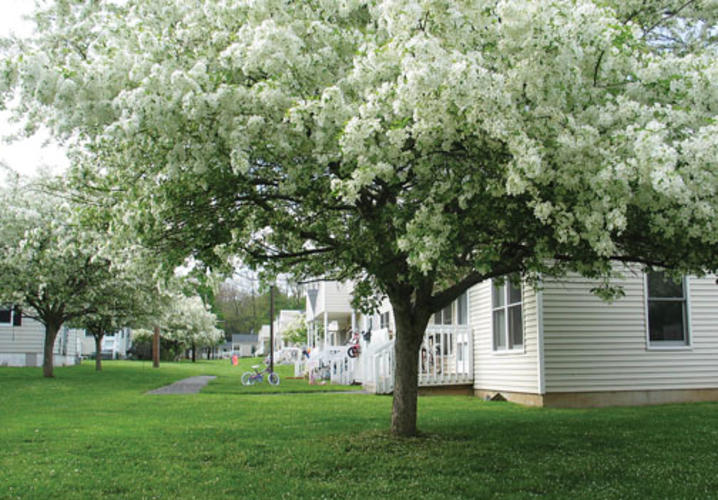
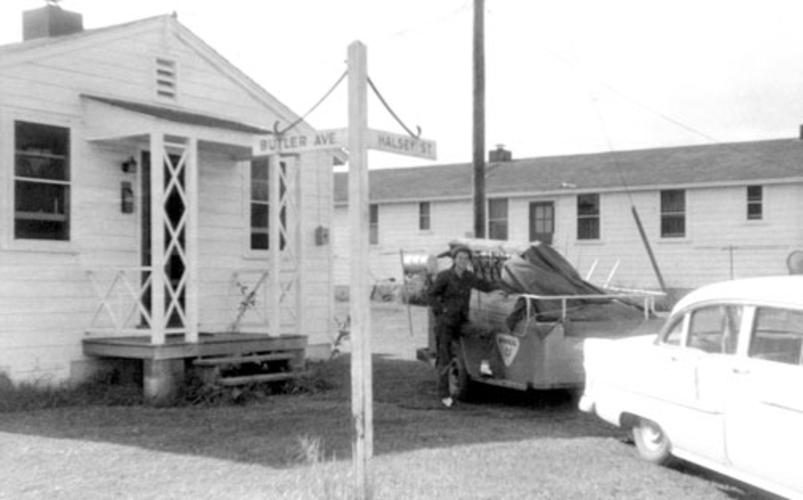

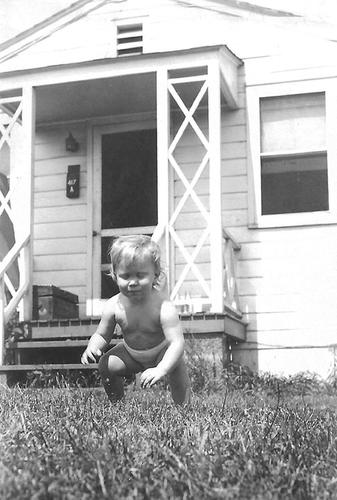
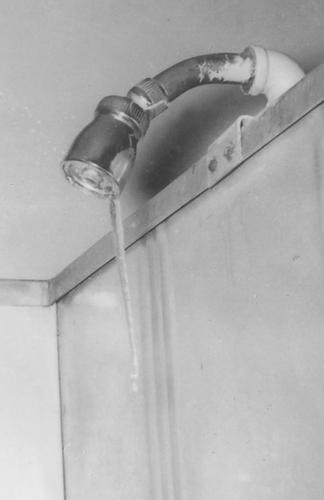
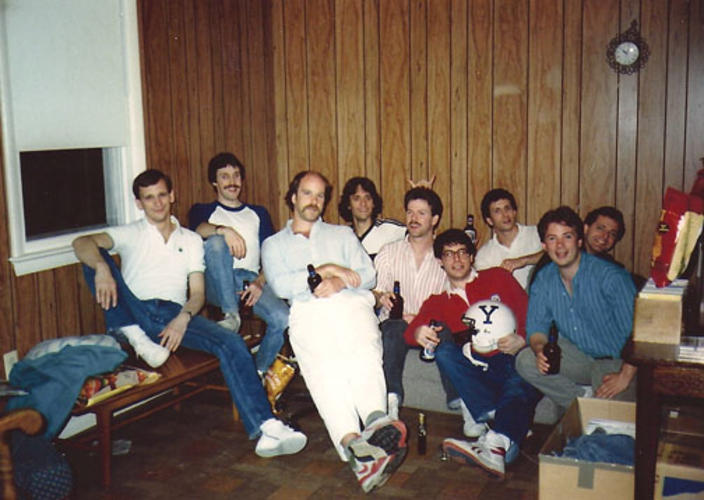
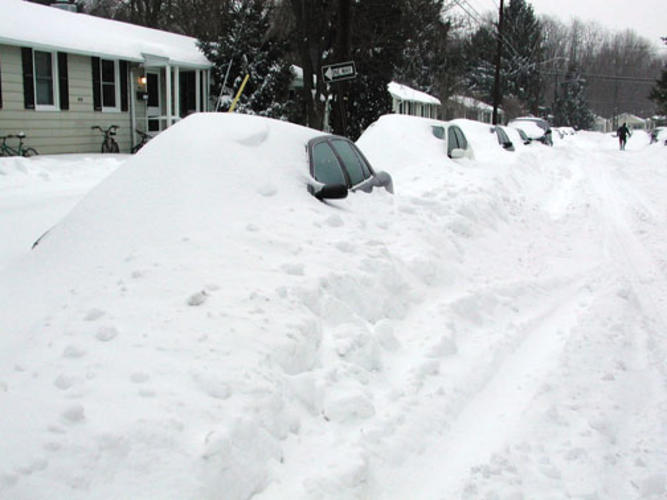





14 Responses
Mike Axelrod *66
1 Year AgoRemembering 223B Eisenhower
Looking back after a half century, living at Butler was the most unique experience I have ever had. As an arriving married graduate student with child (now 62), I needed to find a cheap place to live and, of course, nothing beat Butler. At that time it was $52 per month. I was on the waiting list and fortunate to have been selected.
What I could never have anticipated was the extraordinary opportunity to live in a village of academics of every discipline available at Princeton. Today we take for granted that, in order to succeed in one’s research, interdisciplinary communication is essential.
Once at Princeton, I received a NASA Fellowship, which paid for my education. At that time Sputnik was a recent event and this country poured money into the graduate schools with a strong science curriculum. In addition to tuition, I received a living allowance from which I had to also buy my books and journals.
Even in the pre-inflation days of the early 1960s, $320/month was tough to live on. Those of us with scholarships from the government were paid every two months. For me that was $640. By the sixth week, we were all in trouble so we pooled our resources to make it to the next payment. The term “pot luck” might not have originated at Butler, but for me it did.
The beauty of Butler was the ongoing scene of a group of chemists, biochemists, physicists, mathematicians, engineers, etc. sitting around a table, eating and talking about their research. It was a sharing of ideas in a noncompetitive environment. It took a generation before this was common practice. The combined brainpower at the dinner table was exciting but daunting.
Have you ever lived in a town where almost every neighbor was a babysitter?
For those of us in academic poverty, there was a ton of free cultural and intellectual stuff going on at one of the finest schools in the world.
We had no money and never had it better!
Jim Carnes *70
9 Years AgoVolleyball and Butler
I lived at 217A Halsey in Butler, and in 1967 we started a backyard summer volleyball game. A year later the University built us a fine dirt court nearby. Many international grad students played. Eventually we moved into Dillon Gym and played two days a week. In 1971 we won the N.J. State Championship at McGuire Air Force Base. By 1973 we hosted our own U.S. Volleyball Association tournament.
One Saturday morning in Dillon Gym, a Trenton resident who happened to be playing pickup basketball nearby asked if he could join us. It turned out he was Glenn Nelson, who eventually became, due to his association with the Butler-originated team, head coach of both the men’s and women’s Princeton University varsity volleyball teams. Over 29 years he amassed more than 1,100 wins, making him the winningest coach in Princeton history. Glenn is also the only coach anywhere to take both a men’s and women’s team to the NCAA Volleyball Championships in the same year. (I’d love to hear from any of the players over the years: jim.carnes61@gmail.com.)
Catherine E. Saunders *91 *98
9 Years AgoA Wonderful Life (The Sequel): More Tales From Butler Tract Alums
I was a relatively young graduate student for my day (23 when I arrived at Princeton), and Butler was my first non-dorm home away from home. I was a single female grad student sharing with another single female, whom I met while living at the Grad College my first year. That was a pretty common configuration for Butler roommates during my time there — the late ’80s. On average, single male grad students probably were a bit more likely to linger at the Grad College, while female grad students were more likely to seek out apartments with kitchens in Butler or Lawrence. Extended family groupings (especially grandparents, often from China, coming to help care for new grandchildren) also were pretty common; one of the early-morning sights in my day was grandparents doing tai chi on the sidewalk.
Xuemin Lu *10
9 Years AgoA Wonderful Life (The Sequel): More Tales From Butler Tract Alums
I was pregnant with my first baby, so we decided to move to the more financially and family-friendly housing option: Butler. We never regretted living there. Walking out of the back door, there is grass. Trees, flowers, squirrels, and the quiet neighborhood make it a perfect place to enjoy a life in nature. So sad to hear that it will be torn down.
Martha Jones *82
9 Years AgoA Wonderful Life (The Sequel): More Tales From Butler Tract Alums
We lived in the Butler Tract from fall 1980 to spring 1982. We repainted the inside completely when we moved in because it was dingy and dirty. Our home was slated to be renovated, and they started working on it in fall 1981 by taking most of the siding off the house. But then it got cold, and they decided it was too cold to continue the work so they stopped construction for the winter, leaving our home open to the elements without any insulation. It was freezing all winter — every time the wind blew, the curtains moved. There was no bathtub, so we bathed our baby in the sink. Despite a few inconveniences, we had a wonderful time there.
Vera Keller *08
9 Years AgoA Wonderful Life (The Sequel): More Tales From Butler Tract Alums
I always love running into old Princeton Ph.D.s who tell me how it was in the old, hard times: “You know, when I went to grad school, we had to live in barracks.” And I respond, “Yeah, I lived in those too, but they were 30 years older!”
Donald W. Niemiec ’75
9 Years AgoA Wonderful Life (The Sequel): More Tales From Butler Tract Alums
I arrived at Princeton as a U.S. Navy vet in 1971 and secured a high-priced apartment in Kingston. I was married and needed a more affordable place. I sat on the steps of the office of the dean of graduate students until he let us in Butler. We had a wonderful experience: central heating, clothesline, garden, and great friends. An unrenovated unit was $75 per month and was in greater demand than those renovated at $100 per month. An easy bike ride to campus, dogs allowed, picnics — really a pretty good deal. Since at the time there was no married-student housing, it allowed me to be essentially on campus versus living off campus with little interaction with students. It made a big difference in my Princeton experience.
Katherine King *78
9 Years AgoA Wonderful Life (The Sequel): More Tales From Butler Tract Alums
I may have been the first female graduate student to live in Butler. I moved into 221C Halsey with my two sons, 5 and 10 years old, in 1972. It was dilapidated, but it was great to have a back and front yard and a clothesline. It was a wonderful place for children. We were able to keep a canoe in the backyard, which we occasionally trekked down to the lake.
The one idiosyncrasy no one mentioned is the lack of bathtubs in the unrenovated units. The barracks were clearly built for men who take showers. So women and little children had to take only showers, too — this, and the lack of other women graduate students in the compound (all my close friends lived elsewhere), were the only things that really bugged me. The thin walls, the heater (ours worked well, but you had to give it a wide berth), none of it mattered. It was a great place to live during those difficult years.
Mike Axelrod *66
9 Years AgoButler: A ‘Pre-Faculty’ Row
My wife, young daughter, and I lived in Butler from 1964 to 1966 (Inbox, Sept. 18). The little one in the picture [next page] is now 50! To a married graduate student, Butler offered something that was extraordinary for the time. In the academic community, there is often a faculty row where the professors and their families live. It is a community where intellectual pursuits merge and ideas are discussed and shared, both socially and academically. It is a microcosm of the inheritors of the mantle from the previous generation.
That describes life at Butler exactly. It is the prequel where one observes the next generation of inheritors living together in a “pre-faculty” row. The living conditions, albeit somewhat primitive, could not have been a more accurate look into the future. Even those who did not choose an academic career, as I did not, loved the unique opportunity that might never again be possible. We spent many profitable evenings discussing our research, books we read, politics, careers ahead of us, etc.
My Ph.D. was paid for by NASA (Sputnik-inspired), which, in addition to my tuition, paid a living allowance of $640 every two months. It made “Europe on $5 a day” a luxurious way to travel.
Those wonderful days of Butler poverty turned out to be the most important catalyst to the decisions that mapped my future.
If I had the chance to relive and change the past, I wouldn’t have altered a thing in my years at Princeton.
Gary Hewitt *96
9 Years AgoA Wonderful Life (The Sequel): More Tales From Butler Tract Alums
I am actually a second-generation Butler resident — my father, John Hewitt *66, mother, and older sister lived there in the mid-’60s. Missing from the heater discussion was October or November of 1990, when the old heaters (they were about the size of an old-fashioned large-console TV, if anyone remembers those) were discovered to emit carbon monoxide. They had to be removed, and were all ripped out in one day. Naturally a cold spell set in immediately, and it took about a month of shivering before the new, vertical editions were installed. I stopped by our old apartment on King Street after 20 years, and it looked like they are still going strong. Also entertaining was the annual refrigerator shuffle, since refrigerators weren’t part of the standard apartment equipment.
Steve Kittelberger *66
9 Years AgoA Wonderful Life (The Sequel): More Tales From Butler Tract Alums
My wife and I lived at 408B Devereaux St., and I always assumed Devereaux was another admiral or general, not a polo player. We struggled with the heating system like everyone else. I remember a toilet bowl frozen over on returning from a weekend away. The community garden was great, especially if one had access to the chemistry department’s “morgue” of discarded chemicals. I had radishes the size of turnips one spring, and we lived to tell this tale!
John McLeod *62
9 Years AgoA Wonderful Life (The Sequel): More Tales From Butler Tract Alums
The “central heat” was a kerosene heater in the center of the living room, and very much in the way. I disconnected it in the summer and moved it back to the wall. One day the outside was painted. That involved moving the kerosene tanks away from the wall. When the work crew finished, they moved the tanks back, reconnected them, and turned them on. We came home to a kerosene flood and had to find another place to stay that night.
Tom Avedisian *77
9 Years AgoA Wonderful Life (The Sequel): More Tales From Butler Tract Alums
I lived in Butler for two years, 1978–1980. These were among the happiest years of my life, in spite of all the pressures of pursuing doctoral studies. For me, Butler was paradise. I had my own little house. It was quiet (I dealt with the paper-thin walls by sleeping in the living room). There were grass and trees. I could concentrate there. I wrote my entire Ph.D. thesis in Butler. It was wonderful. OK, I was young, I was in love, and Butler will always have certain associations.
Suketu Bhavsar *78
9 Years AgoA Wonderful Life (The Sequel): More Tales From Butler Tract Alums
I lived in the Graduate College my first two years at Princeton, but a close friend had moved to the Butler Tract with his fiancée during my (and his) second year. His place became a home away from home, especially with my “home” being 10,000 miles away in India. Getting away from dormitory life and visiting them in a real home with a kitchen and a porch, home-cooked meals, and the smell of chocolate chip cookies baking in the oven are some of my fond Princeton memories.